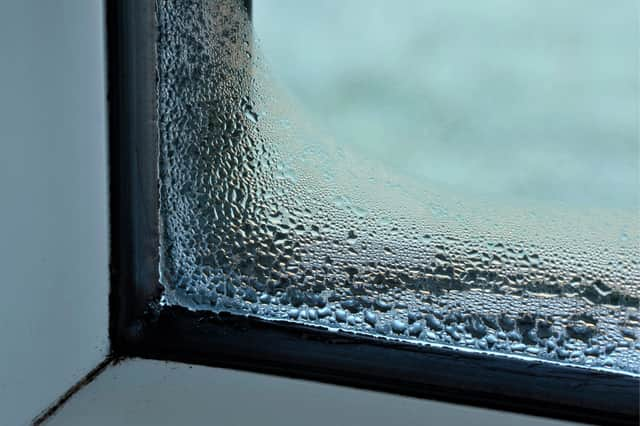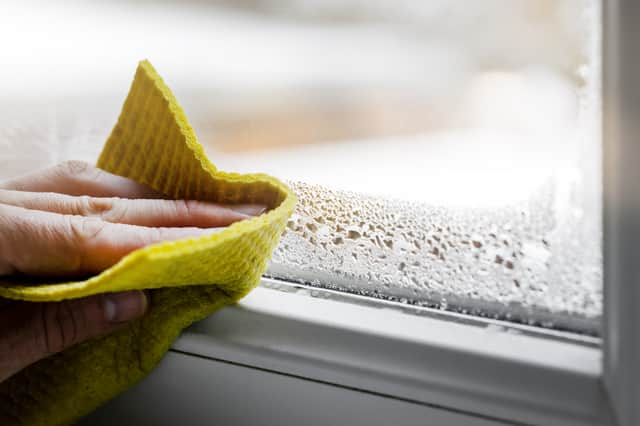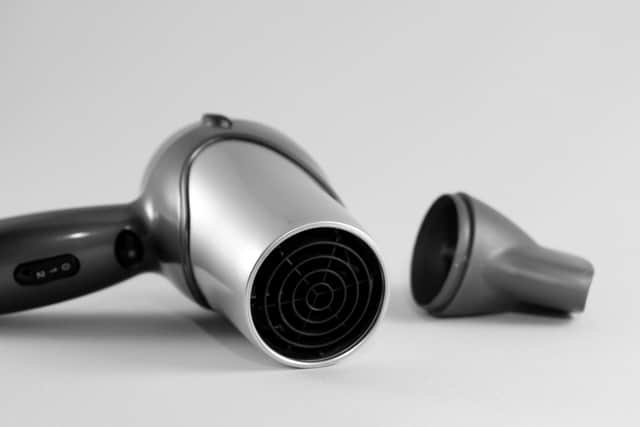How to stop condensation: What causes window condensation and how to get rid of it
Condensation is a nuisance which most homes will have to deal with at one point or another.
However, it can become especially problematic during the winter months, building overnight. If left untreated, condensation can lead to mould, damp and cause health issues such as asthma.
Advertisement
Hide AdAdvertisement
Hide AdFor those looking to resolve an issue with condensation, we can help explain what causes condensation and how best to treat it.
What causes condensation on windows?
Condensation forms on windows when warm air from indoors comes into contact with cold surfaces such as glass. Water droplets form due to the shift in temperature, reaching a "dew point".


Double-glazed windows have two glass panes separated by argon gas that have 2 seals designed to keep out moisture and retain heat in your house. If you see condensation building up in your window then it is possible that one of the seals has broken.
Another reason why windows get condensation is due to increased moisture levels in the air; whether it's from showering, cooking, drying clothes inside or even just breathing.
Does condensation cause mould?
Mould frequently grows in households due to window condensation. Condensation can cause damp which leads to mould that appears as multiple little black dots. To remove mould caused by condensation you should wipe it away with a cloth soaked in soapy water.
The NHS reports that moulds produce allergens and toxic substances that when inhaled or touched may cause an “allergic reaction, such as sneezing, a runny nose, red eyes and skin rash. Moulds can also cause asthma attacks.
How to get rid of condensation inside windows?
There are many ways to temporarily fix condensation build up inside windows. Here are some ways you can get rid of condensation at home.
1. Ventilation
If humid air cannot be released then it will cause water droplets to form inside cold surfaces in your home, therefore good ventilation is important to tackle the problem.
Advertisement
Hide AdAdvertisement
Hide AdOpening windows is a good way way to prevent condensation, as well as leaving curtains open at night. If you’re heading out, leave your trickle vent open and make sure that you air the room out each every morning.
2. Dehumidifying
Dehumidifiers prevent the build up of excess humidity in your home which therefore prevents condensation. There are small disposable units which contain moisture collectors, as well as larger compressor-driven ones which you can purchase on Amazon.
3. Wipe windows down
If you are still seeing condensation on your windows, make sure to wipe them down as quickly as possible. This will help you avoid damp and any damage to your woodwork.
Tools such as window vacuums are also good for removing condensation in the mornings.


4. Keep the temperature of your home consistent
Another way to help reduce condensation is by keeping your home at a low and constant level. It's the changes in temperature which can cause condensation to form, which is why heating your home constantly can help prevent damp.
5. Purchase a houseplant
There are certain types of houseplants which can help get rid of condensation - such as snake plants - but there are also indoor plants which can release moisture, so be sure to do your research.
6. Improvise
There are a number of DIY tips which could help solve your condensation problem, however always do your research beforehand as some could cause more harm than good.
You can use absorbent cloths, squeegees or condensation blocker strips to get rid of moisture, in conjunction with a mould and mildew treatment, or even utilise a cup of salt or cat litter on your window to absorb condensation.


Advertisement
Hide AdAdvertisement
Hide AdThere are also "hacks" such as using your hair dryer. If you adjust your hair dryer to a low heat you can use it to evaporate the condensation trapped inside your windows, however ensure you do so at a safe distance or else you could accidentally melt other components of the window.
How can you stop condensation on windows?
If you’re looking for a long-term solution then it is recommended you contact a professional. An expert will be able to assess the cause of your condensation and offer ways to resolve it like resealing the window panes or refitting the entire window.
While it is not the cheapest option it is often recommended that the entire window unit be replaced as this can secure the unit from condensation and by extension the damp and mould that develops in your home as a result of it.
Comments
Want to join the conversation? Please or to comment on this article.
